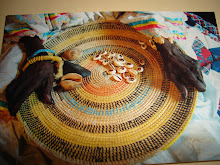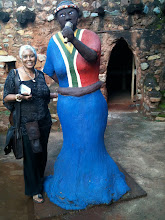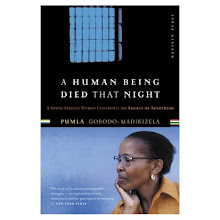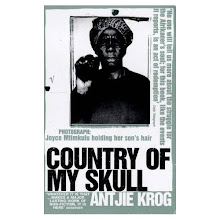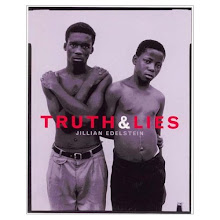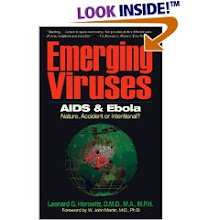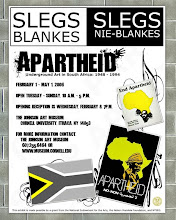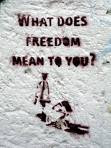




Plans changed and I dropped my fellow traveler in St Lucia (more later) about a 2 hour drive from Eshowe. I headed back close to Mtunzini to find my very own Zulu grandmother Zethu (the Jewel of Africa) I say find because it takes me back to 3 years ago when I first returned this precious jewel home after over a decade living in London and the USA. She had become very ill, unable to look after herself, drugged with several medications that caused more symptoms to her already distressed body.
Her legs were swollen and ulcerous. The first of her family to leave home during Apartheid, a brave woman, determined, strong and resilient. She put herself through nursing school
She had never wanted to return home for fear that she would be a burden to her family and she was very stubborn about this. So it was a surprise when she agreed that I should return her home when we had no other choice but to put her in a nursing home. She was not willing to die amongst strangers.
When I visited her 2 years later I found a very different woman, all her symptoms had gone. Physically she was radically improved, she walked without a walker and dressed and washed herself. She lived on a diet of corn flakes and milk, MAAS a sour milk that is mixed with crumbled bread and vegetables mostly grown in the garden and chicken that had been raised at the end of the yard!
She had decided to no longer continue her medication, some 16 pills a day. But more than that what I witnessed and now believe was a strong feeling that I had had a few months prior to her getting very ill, was that the cure may just be, to be with family, return and make peace with the land that she had left due to horrendous circumstances, eat cultural food and speak her language with her people. I believe that was her healing.
She lives in Rural Kwa Zulu, in her cousins home, on a bumpy dirt track road with no name, that looks like any other dirt track road so is hard to remember how to find her. The house is a brick structure with electricity and occasional running water. Huge green water tanks collect the water as well as covered buckets that are kept around the house, just in case there is a water shortage. The cousin has a vegetable garden and used to keep chickens. Each day she wakes up to a cock crowing and a chorus of birds. This is the main stay of the rural locals. Of course as you will find all over South Africa the whites own all the fertile land and the blacks were cast to land that could not be farmed or cultivated.
Kwa Zulu Natal though has a different feel to it. Because of its climate spoken about in the last post the locals are able to cultivate small patches of land and grow enough vegetables to feed the family.
Many people travel by “Taxi” that pick up at designated areas. They are the Combies holding about 25 people. They own the roads, pulling out, overtaking on the inside lane stopping at any given time without warning very dangerous animals indeed and cause the majority of the thousands of road accidents reported in South Africa. People wait for hours at any one time! And still people walk for miles some dressed in their smart work clothes. On Sundays it is not unusual to see people walking along the road in their Sunday Best complete with hats heading for the local church a few miles down the road, and children still have to walk for miles to the school, some shoeless alongside side those whose family can afford shoes.
There are no side walks on the roads and even driving in town is hazardous as folks are still walking in the road and crossing the street as though cars do not exist. But this is Africa all over and in South Africa in particular because of Apartheid, modernity has changed the look and feel of the country in a way that I suspect is quite different from any other Africa. It is not a third world country, and yet in some parts of the country the food on the shelves in stores were 2 years past their sell by date, maybe 2 vegetables to chose from, none green, and cans of unhealthy food. Meat that was eaten had to be brought in frozen from maybe an hours ride away. In other areas the Malls that are springing up serve the needs of those in the New South Africa where blacks, whites and coloreds walk together, shop in the same stores and eat in the same resteraunts.
I stayed in Umtunzini for two nights. A family meeting had been called to work with a problem that had arisen with my grandmother.
I have to say that when I saw the elders arrive and up to 4 more family members to discuss and solve conflict between my grandmother and her cousin I was humbled. They spoke in Zulu and as I understand afterwards much challenging discussion had occurred yet I did not hear one raised voice. I heard each person have a say more than once. There was no talking stick and no one interrupted the other. It was a good outcome.
The next day my grandmother and I parted for St. Lucia.
St Lucia is an Estuary situated on the East Coast of Africa . The main inhabitants were the Nguni tribe that occupied the region of the Tugela and South of Algoa Bay. It is world renowned as a wildlife and fishing destination since 1822. and a coastal jewel The park was the first to be declared a world heritage site by the United Nations. It has a sub tropical coastline and a classic African Game Park. It is South Africa’s third largest park spanning 280 kilometers of coastline from the Mozambican border in the North t Mapelane south and the St Lucia Estuary and made up of 320,000 hectares of pristine natural ecosystems, including swamps, beaches, coral reefs, wetlands, woodlands and coastal forests. here and no where else in the world can one find hippos, crocs and sharks sharing the same waters!
On our arrival I took my grandmother to a small Zulu village I had visited in the past. She had expressed great joy when I asked if she would like to see Zulu dancing.
The dancers were a group of young men and women who live in the huts in the village. Good to see that this tradition still holds the interest of the young ones and my grandmother was thrilled.
Zulu dancing takes the form of a competition, with members of the dance group jumping up randomly to see who can lift their leg up as a high as possible and come down with a loud stomp often ending lying on the floor as they lose their balance. I have seen tiny kids break out in this dance in the street and in schools so its still taught still held in tradition. They dress in traditional fur hats and skirts, and are adorned in brightly colored bead anklets and necklaces, they also carry a small spear with a skin shield.
The next day we explored a Cheetah Sanctuary
Cheetahs that have been rescued for various reasons either caught in snares, their mothers have neglected them, unwanted pets, or they have broken limbs.
Each one are cared for and fed by the sanctuary where they are held until they are well enough to be released back into the wild. They are fed zebra. We were invited to join two baby cheetahs, in their play, a football and lots of cuddles.
At 1am in the morning I was awakened by very loud primal sounds. My fellow traveller also came out of her room and we walked towards the noise, a parking lot belonging to the hotel across the street. There were two very large Hippos with a palm tree between them jaws wide sparring with each other. The sounds were hissing and very loud calls. It sounded as if they were in pain. The only thing that really kept them from tearing each other apart was the palm tree. The smaller hippo very cleverly stayed behind it. The local security guards said they had never seen anything like this before and when we asked why they were fighting .....Oh it is over a woman. How long will it go on for we asked, until one dies.
And so we watched for about 40 minutes, the larger hippo stomping off on three occasions only to return for more until he finally disappeared back into the Estuary for good, and the smaller one also finally walking off on another route. Maybe to end the fight in the water. I was wondering how these amazing creatures their enormous jaws (see above) survive so close to humans and modernity. When I told my grandmother the next morning, she was quite upset, for the whole day. Finally she said, “Why didn’t the woman tell them they should not fight over her!”
The following day I took her (my go go not the woman hippo in question ) out on the Estuary for a boat ride where we saw hippos submerged in the water, crocodiles alongside the riverbank, so still they looked like stone until with one flick of the tail they were in the water, and the most incredible birds. The estuary spans wide ...........and is how I expect an African river to be, brown, muddy and murky.
Later that day we drove to Cape Vidal through a small park where we drove alongside wart hogs, buffalo and a very special treat we encountered four black Rhinos crossing the road . One of them had a baby rhino about the size of a small dog and as lively as that, with big feet galluping (new word) along. It was an absolute treat and blessing to be a few feet away from these animals, who are quite otherworldly. Gentle unless provoked, hmmm .....much like us.
When we arrived at Cape Vidal a long white sandy beach, we placed a chair we had brought in the center of the sand so go go could sit and watch the ocean as she was too tired too walk on the hot sand, while my traveler and I put our feet in mama water for the first time since we arrived in South Africa. Scores of jelly fish and the setting sun (we had to return by 7pm ) or we would have to stay in the park, sent us back to the town. Granny saw the African ocean for the first time in many years, and so a dream of mine had been realized.
We returned her home the next day my traveller and I set of for Durban where we spent one more night on our way to Johannesburg, where we met up with the third traveler arriving back from her initiation in Zimbabwe.

